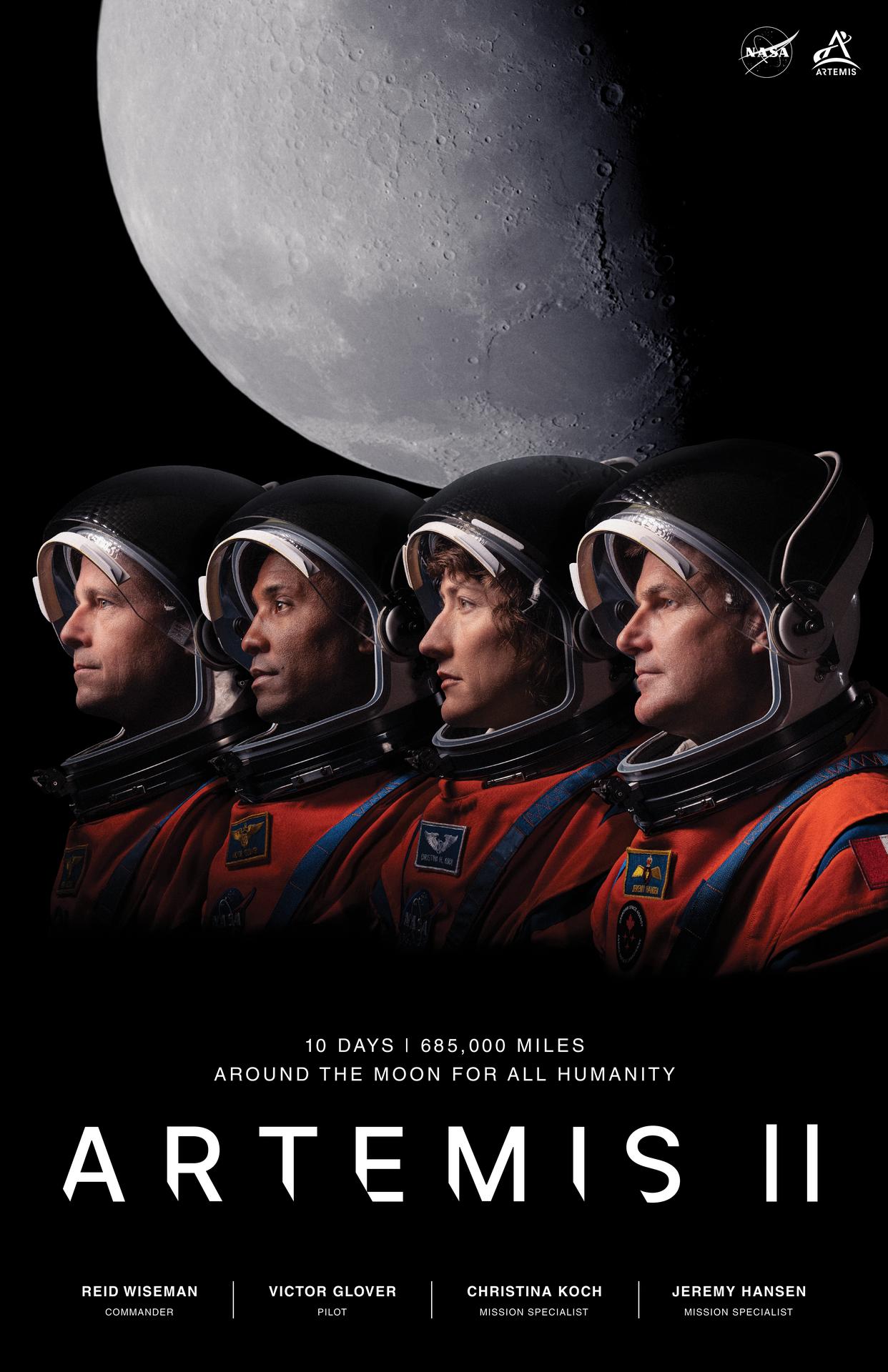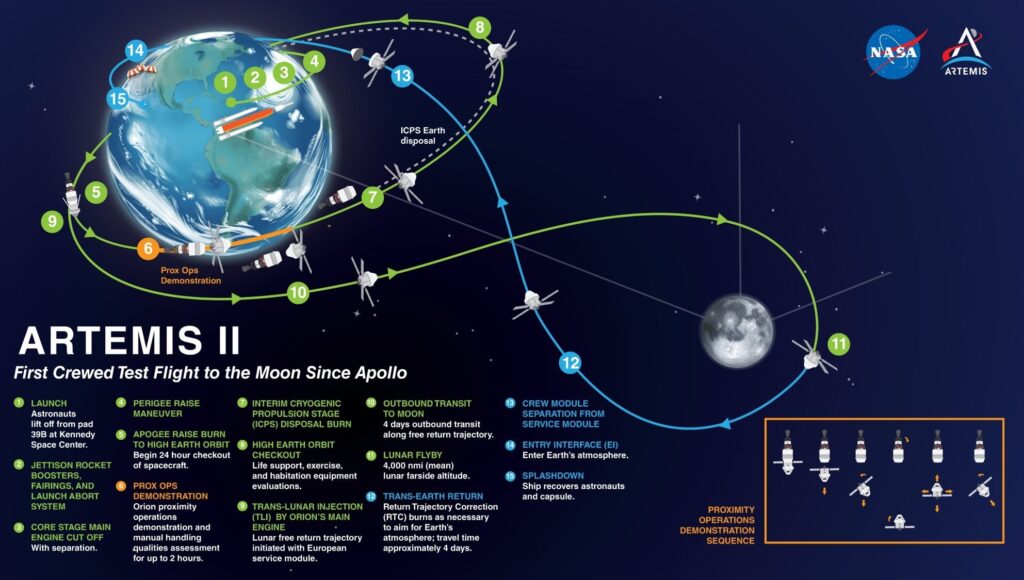To mark the 55th anniversary of the first human landing on the moon, NASA has published a poster. It focuses on the upcoming Artemis II mission, which will take humans out of the vicinity of our planet and travel to another celestial body for the first time since 1972.
Artemis II mission crew
The Artemis II mission is scheduled for September 2025. Its crew consists of four astronauts. Three of them represent NASA. They are commander Gregory Weisman, pilot Victoria Glover and mission specialist Christina Koch. Mission Specialist Jeremy Hansen is an employee of the Canadian Space Agency.

For the launch of Artemis II will be used super heavy rocket SLS. Its central block was delivered to Cape Canaveral the other day. A pair of solid rocket boosters and a second stage will be added, after which the rocket will undergo a series of tests to certify its readiness for flight.
Artemis II mission flight plan
NASA also recently published a detailed flight plan for Artemis II. The Orion spacecraft with four astronauts will be launched into an initial elliptical orbit with parameters of 185 by 2,250 kilometers. After one orbit around the Earth, engineers will restart the second stage of the SLS. It will raise the apogee of the Orion orbit to 74,000 kilometers. This is twice the orbits of geostationary satellites. After completing the maneuver, Orion will separate from the SLS.

Orion will take 23.5 hours to complete one loop in its new orbit. Astronauts use this time to check all systems, as well as to train. The second stage of the SLS will serve as a target for them to practice the approach operation, which will be conducted in manual mode. The demonstration will provide Orion performance data and experiences that cannot be obtained on Earth. The data will be useful during the next lunar mission, Artemis III, during which astronauts will dock and undock in near-lunar orbit.
Once this phase is complete, the astronauts will activate Orion’s engines and put the craft on a free-return trajectory around the Moon. The spacecraft will fly around our planet’s moon without entering its orbit like the Soviet Probes and Apollo 13 once did. The distance of the minimum approach to the Moon will be 7400 km.
After overflight, Earth’s gravity will pull Orion in, so the crew will not need to restart its engine. Four days later, the capsule with the crew will enter Earth’s atmosphere and splash down in the Pacific Ocean. The total duration of the flight will be ten days, during which Orion will fly a distance of 1.1 million kilometers.
According to NASA


